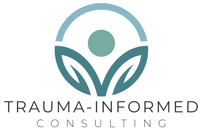Taking the Lead in Community Resilience
We are not well.
There is a lot of healing that needs to take place – in our individual lives and within our communities. We have conspiracies growing and widening political polarization. We have a rampant loneliness epidemic. We have huge a rise in suicide. We have a mental health crisis. We have extreme inequality and increased violence. We have climate change, bringing us extreme heat, fires, floods, and hurricanes. It seems everywhere I turn, there are messages focused on personal pleasure and success, leaving out the collective component. I believe we are starting to all feel the consequences.
The evidence is clear.
For some time, there has been talk about trauma-informed care, an evidence-based approach that has emerged out of our more recent ability to study the brain, the autonomic nervous system, and the field of neuropsychology. As often happens, the discussion has taken place in research labs and professional journals while the benefit for society is primarily lacking. Over the past ten years, schools and social services have attempted to implement programs that recognize how trauma impacts those they serve and build programs to promote social and emotional growth. Change is moving slowly. The medical field is resistant to embrace this approach. The private industry is beginning to talk about workplace wellbeing, but the understanding of how to build resilience based on the science of trauma is often missing. There is a growing focus on encouraging mindfulness practice, but the imperative for providing safe environments is left out of the plans.
The need for trauma-informed care is now.
Over the past twenty-some years, researchers have been able to clarify what chronic stress, adverse experiences, and traumatic events can do to our bodies, behavior, and relationships. We now understand that disease, substance abuse, anxiety, depression, relationship tension, and violent outbursts are some of the symptoms that result. We also understand now that empathic connection within safe environments is key to solving the problems we face. The answer is not a one-person solution. The answer involves us all together, as a community.
To be clear, the negative impact of high stress and trauma can be healed when we engage others in a way that promotes emotional regulation, a sense of worthiness, and the ability to be in a state where the body can be calm. This approach encourages empathy, creativity, innovation, focus, and positive relationships. It decreases the tendency to live in a mobilized state of “fight or flight”, which is only beneficial when needed and not for long periods of time.
How does leadership encourage this health and productivity? The six guiding principles of trauma-informed care gives us an easy way to reach this goal. These principles are built upon the trauma-science that understands what happens to us when we experience high stress and trauma as well as how to decrease these negative outcomes and build resilience.
The Six Core Guiding Principles:
Safety: Creating an environment and engaging one another in a way that is safe will promote physical, social, and emotional wellbeing. When our brains and bodies sense safety, we open to being creative, collaborative, and emotionally balanced.
Trustworthiness and Transparency: When we live and work in an environment that is honest, where we can trust what we are being told, and the goals and intentions are clear, we can live without the concern for survival. Production, cooperation, and innovation will thrive.
Collaboration and Mutuality: While competition can be healthy, a high-stress environment that promotes being on edge, struggling to be “one up” on each other, or not recognizing each other’s contribution is the path to negative behaviors, anger, and physical illness. When we feel that we are a part of the team and are given respect, self-worth is built, and resilience grows.
Voice and Choice: We are empowered when we are given avenues to use our voice and make choices in our lives. This can be a part of all environments, including those in the workplace and in our communities.
Peer Support: While peer support is often used in the field of substance abuse, such as in AA, the reason is because people feel safest when they are with others that have shared experiences. This same concept can be used when we engage with others in a way that acknowledges shared experiences, including those of everyday challenges.
Cultural, Historical and Gender issues: Recognizing the uniqueness of each person is a critical way of creating a safe and empowering place. We become our best when we live and work in an environment that embraces who we are in all aspects of our lives.
Trauma-informed care is the answer.
The science of trauma and wellness teaches us that we do best when we are willing to empathically engage with one another, seeing each as valuable, and giving each person a seat at the table. If we want to live and work in a community where we can actively participate, free of the physical and emotional harm that ongoing adversity and stress creates, we can. It’s up to us all.
